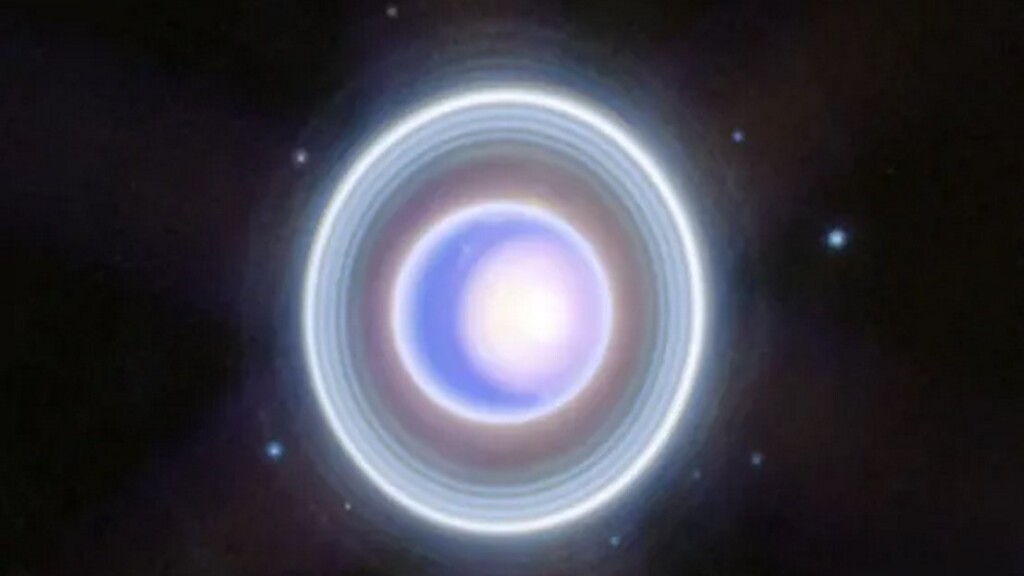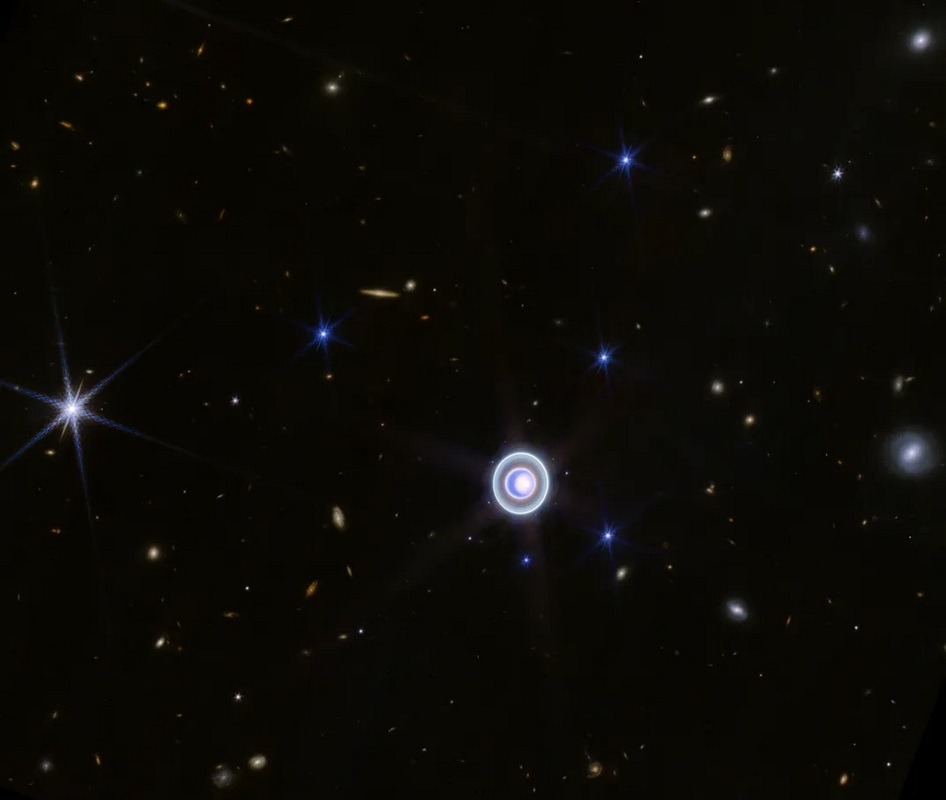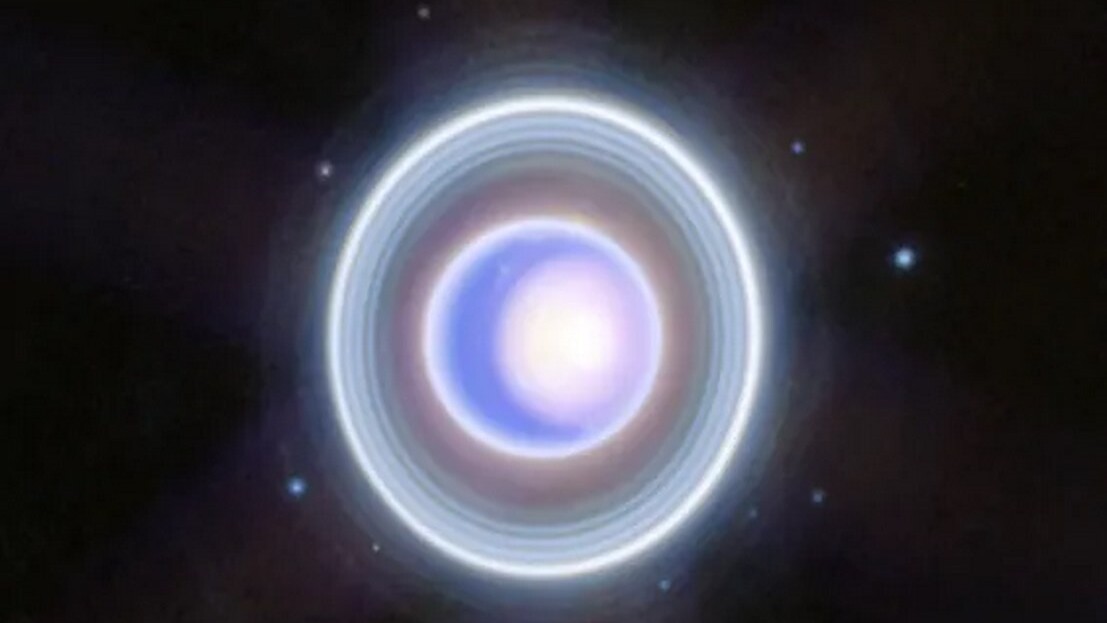
Among all the things that the James Webb Space Telescope has taught us, one of the most surprising for the layman has probably been that all the outer planets have rings.
The rings of Saturn are well known, but Webb has already shown that the ice planet of Neptune sports rings as well, and now, Uranus has been shown shining like a bright blue eyeball.
When NASA’s spacecraft Voyager 2 flew past Uranus in 1986, the planet appeared to be a nearly featureless, solid blue ball. Webb used its infrared view to show that it’s much more dynamic and intriguing. Rings, moons, storms, and a bright, north polar cap grace these new images.
Because Uranus is tipped on its side, the polar cap appears to become more prominent as the planet’s pole points towards the Sun and receives more sunlight—a time called solstice. Uranus reaches its next solstice in 2028, and astronomers will watch for changes in the planet’s atmosphere.
Uranus also spins on its side at a tilt of about 98 degrees, giving it the most extreme seasons in the solar system. For nearly a quarter of each Uranian year, the Sun shines over one pole, plunging the other half of the planet into a dark, 21-year-long winter.
LOOK AT NEPTUNE: New Webb Image Captures Clearest View of Neptune’s Rings, Revealing the Ice Giant in Whole New Light
With Webb’s unparalleled infrared resolution and sensitivity, astronomers now see Uranus and its unique features with groundbreaking new clarity. These details, especially of the close-in Zeta ring, will be invaluable to planning any future missions to Uranus.

One day on Uranus is about 17 hours, so the planet’s rotation is relatively quick. This makes it supremely difficult for observatories with a sharp eye like Webb to capture one simple image of the entire planet—storms and other atmospheric features, and the planet’s moons, move visibly within minutes. This image combines several longer and shorter exposures of this dynamic system to correct for those slight changes throughout the observing time.
MORE RINGED PLANETS: Scientists Stunned by New Jupiter Images With Galaxies ‘Photobombing’ the Webb Telescope
Uranus can also serve as a proxy for studying the nearly 2,000 similarly sized exoplanets that have been discovered in the last few decades. This “exoplanet in our backyard” can help astronomers understand how planets of this size work, what their meteorology is like, and how they formed. This can in turn help us understand our own solar system as a whole by placing it in a larger context.
SHARE This Unparalleled Image Of The Most Distant Planet…




















